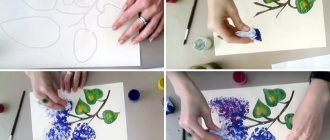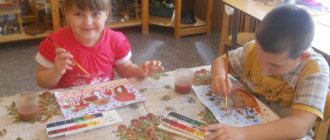World Kindness Day
Class hour
"World Kindness Day"
Target:
- Introduce children to World Kindness Day; conduct a conversation on this topic, create a definition of the concepts of kindness and kindness.
- Develop skills of creative thinking, teamwork, and self-analysis.
- Develop understanding of words kindness
, a friendly and respectful attitude towards the world around us, a sense of responsibility for one’s actions and words, a sense of collectivism, a correct understanding of the meaning of the word
friendship
.
Methods
: visual, verbal, practical, partially search, problem-based.
Equipment:
interactive whiteboard, cards for students.
Progress of the event:
- Organizational stage
.
Greetings. Setting goals and objectives for the class. Creating a cozy and friendly atmosphere in the classroom.
- Good morning, guys! I would like to wish you a successful and fruitful day. Today's class hour is dedicated to World Kindness Day. On November 13, people all over the world celebrate this holiday. He will tell us more about this holiday... (one of the students prepared in advance gives a report)
November 13 is World Kindness Day. It was on this day in 1998 that the first conference of the World Kindness Movement opened in Tokyo, in which Australia, Canada, Japan, Thailand, Singapore, Great Britain, and the USA took part. Later, other countries joined the movement. According to scientists, those who express their gratitude, tenderness and other kind feelings towards people in specific everyday activities not only look at the world with greater optimism, but also physically feel better and feel their lives are more harmonious. In turn, scientists from the University of Michigan (USA) believe that kind people get sick less and live longer. Researchers followed more than 400 elderly couples for five years. Partners who showed attention and care towards each other got sick half as often. Scientists also noted that compassionate people live an average of nine years longer, probably due to the fact that they have better immunity and a healthier heart: after all, when a person does something good for other people, his level of lymphocytes increases and blood vessels dilate. Another “side effect” of kindness is the production of “pleasure hormones.” When a person helps other people, his brain produces large amounts of endorphins, known as an excellent natural pain reliever. In addition, endorphins have a calming effect, neutralize the effects of stress, and alleviate depression. By being responsive, we experience physical relief, feel less lonely, and are less disliked by those around us. Finally, responsiveness is accompanied by an upliftment bordering on euphoria, which is explained by the production of the hormone serotonin, which regulates our mood. In Russia, World Kindness Day was first held in 2009. On this day, a flash mob took place on Manezhnaya Square in Moscow, initiated by Psychologies magazine. Many people gathered in the square wanting to join the World Movement. At 11:00, everyone who came joined hands, thereby forming a circle, in the center of which was the Globe of the World Clock. This gesture served as a symbolic sign of solidarity with the whole world and those countries in which Kindness Day is also celebrated. On the same day, special Kindness Post Offices were organized in the capital's Starbucks coffee shops, where everyone could write personal letters to residents of boarding schools for the elderly, send them a few warm words of support and participation. By the evening of November 13, more than 500 letters were sent to two hundred addresses of residents of boarding schools in the Tula and Vladimir regions. In other countries, on this holiday it is also customary to give flowers to friends and strangers.
- Thanks a lot. Now let's talk about kindness
.
- Conversation about kindness.
The teacher conducts a conversation with the class, asking problematic questions.
- Tell me, guys, what is kindness in your opinion?
(kindness is the desire to help others, mutual respect, responsiveness, etc.)
— Ozhegov’s dictionary gives several definitions of the concept of kind.
Pay attention to the slides.
A good
person is a person who brings goodness and goodness; sympathetic, good, moral, friendly, honest.
You guys were right in defining the word kindness.
- Conversation “Showing kindness.”
— Guys, pay attention to the following slides. They depict a certain situation. You must think and answer whether we can classify this situation as an act of kindness.
Slides change on the screen one after another, depicting various situations: 1. A little girl feeds the pigeons; 2. A man feeds a stray dog; 3. A girl helps an elderly woman carry heavy packages, etc.
Students comment on each image.
- You're right, guys, we can attribute the actions depicted in the picture to manifestations of kindness.
4. Creative work “How can I show kindness?”
— There are small leaves in front of you, guys. Please think and write down what good deed you can do right now.
Students write down a list of good deeds on pieces of paper (help their parents, teacher, homeless animals, etc.). They should complete the task in 3-5 minutes.
Then, within 1 minute, they tell their desk neighbor about their good plans. After the group conversation, all the children, led by the teacher, stand in a circle and begin to talk in a chain about what their neighbor told them. This is how children learn to work in a group, listen to each other and analyze.
- Summarizing.
The children are still standing in a circle.
- Guys, it’s not just today that we have to be kind. We must be kind always and to everyone. I wish you all the best and the best (students join hands and promise to be kind).
- Thank you all so much for your work! You did well!
The teacher can give the children treats in the form of sweets or chocolates at this stage of the event.
Progress of the game
Children form a circle and hold hands. First, the teacher begins to speak to the child whom he is holding by the hand on the right. For example: “Misha, you are so polite today!”
Next, the child turns to the child whom he is holding by the hand on the right. If a child finds it difficult to give a compliment, then other children help him.
“I know how to give in”
.
Goal: to teach children to respect each other, give in, share; cultivate friendliness.
Material: toys, candy, apple, chair.





